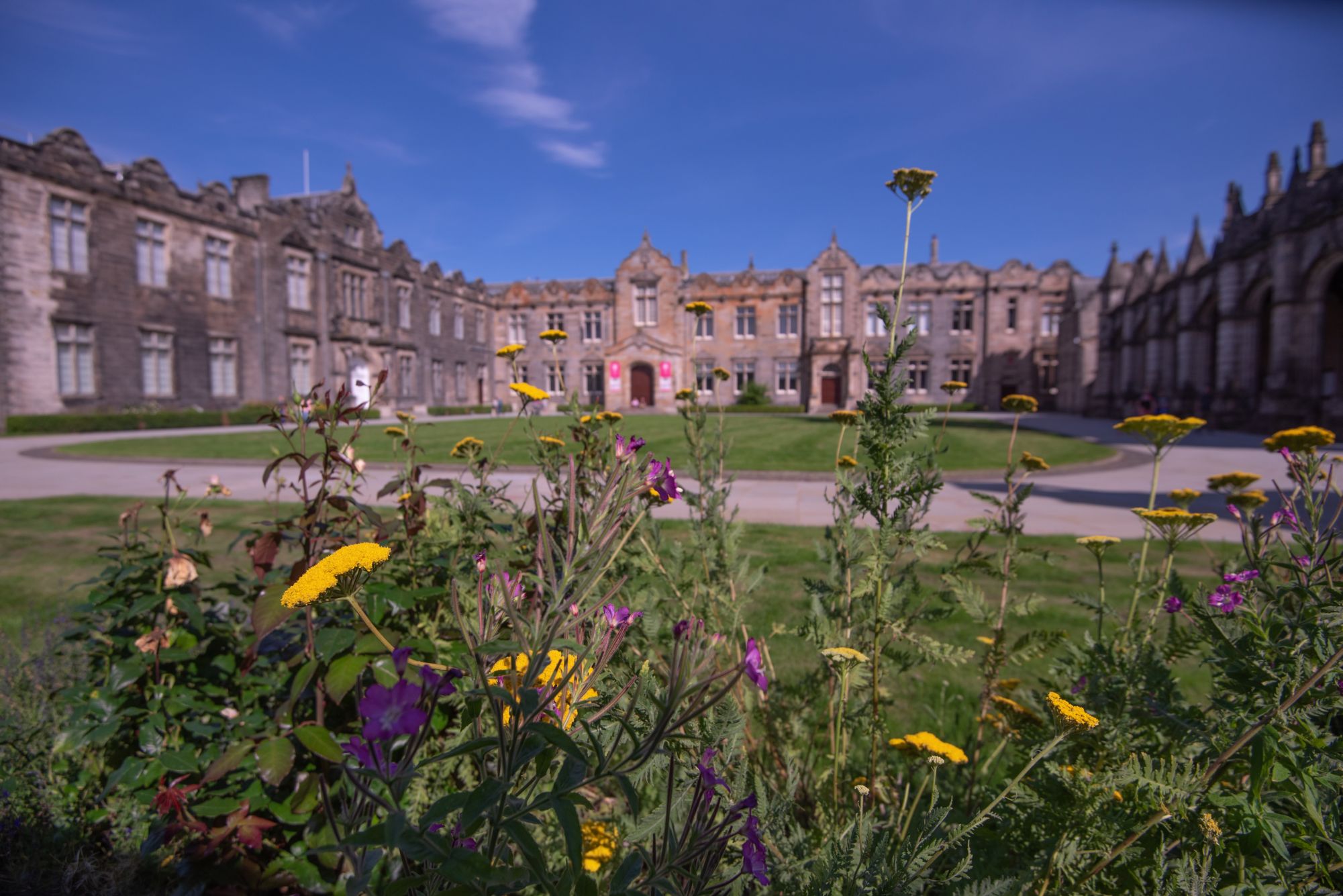Funding has been awarded for an exciting landscape-scale project to create a network of meadow habitat in open spaces in and around St Andrews and Guardbridge for the benefit of people and pollinators.
The initiave is led by the University of St Andrews in partnership with St Andrews Botanic Gardens, Fife Council, Fife Coast & Countryside Trust and Crail Community Partnership. However, Transition needs to recognise the role of two new University staff whom we will be working alongside in supporting this: Johanna Willi, Ecological Projects Manager, and Stephen Paul, Practical Conservation Worker.
In their roles they aim to cultivate a transformational change in land management, increasing biodiversity and sustainability locally. The project links in with the University’s aspirations to achieve Net Zero and manage 60% of land for biodiversity by 2035. Diversifying our open spaces will create rich, attractive places for people and wildlife to enjoy.
Around 8 hectares of closely-mown grassland will be brought into management as meadow habitat. This will allow wildflowers to flourish, and attract a variety of wildlife to this important habitat to forage, shelter and nest. Pollinating insects such as bees and butterflies, birds such as swallows and goldfinch, small mammals such as bats and hedgehogs, and amphibians such as frogs and toads will all benefit. The UK has lost 97% of its flower-rich grassland since the 1940s, with a resultant decline of around two thirds of pollinating insects. Woodland and hedgerows will also be created, even linking St Andrews and Guardbridge with a green corridor.
This transformation will take time and careful management. Wildflowers flourish in nutrient-poor soil, so at the beginning the long grass will be cut 2-3 times in the growing season to strip nutrients from the site. So don’t be alarmed if your local wildflowers are knocked back a bit sometime soon! It’s all part of the plan and you can find out more about the process here.
Leaving the grass uncut this summer has already brought some colourful blooms to the surface! At North Haugh we spotted the vibrant magenta of a swathe of orchids, and the clover has been popular with red-tailed bumblebees recently. Other delicate Scottish wildflowers are appearing, such as vetches, hawkbits, yarrow and speedwells.

Meadows in the Making will offer lots of opportunity to get involved in practical activities such as hay raking and wildflower seed gathering, wildlife surveys and monitoring, events and training. We will be running a Grassland Habitat Course on grass identification, survey and monitoring, and management on 31st July. To get involved in the project email info@standrewsbotanic.org and for more information visit https://www.st-andrews.ac.uk/sustainability/biodiversity/.
This project is supported by the NatureScot Biodiversity Challenge Fund.


